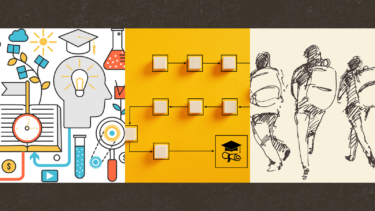From the President’s Pen: Diving Deep into What Makes an Amazing High School
Like many, I have fond memories of my high school days. At Eastside High School in Greenville, South Carolina—class of 19…cough…cough—I cultivated life-long friendships, played the lead in the school’s musical “Th e Boyfriend,” took great classes with amazing teachers, cheered on the mighty Eagles, and so much more. I volunteered at the Greenville Little Theatre and played organ for the church choir. My 60+ self, however, realizes how oblivious I was to the experience of other students. I lived in a world that was a good fit for me.
My next personal experience with high school was as a parent. When the dean of students at a charter school in Columbus, Ohio, told me my child would spend two days a week in internships, beginning as a sophomore, I hesitated. “When does the learning happen?” I asked. I learned soon enough. My children worked in a guitar repair shop and volunteered at Mount Rainier National Park as part of their Graham School experience, and they learned so much.
Presidents Pen: Diving Deep into What Makes an Amazing High School



 i
i
 i
i